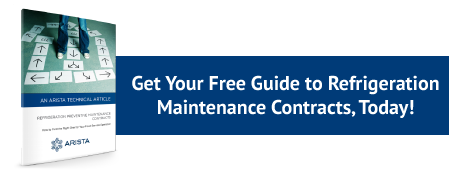In the restaurant business, how do you keep your profits consistent when costs are continuously rising? Food prices, utility rates and wages are going nowhere but up. Especially in New York City where competition is fierce, you probably aren’t in a position to raise prices to offset increased expenses. So what can you do? You need to find a way to cut operating costs without impacting the quality of your product or the comfort of your guests.
A surprisingly effective strategy is to focus on energy efficiency. According to ENERGY STAR, the average restaurant uses 5 to 7 times more energy per square foot than other commercial buildings. If yours is a quick-service restaurant, you may be using up to 10 times more energy. That’s a lot of cash that could be going toward your bottom line. If you can save 20 percent on energy costs, that could increase your profit margin by as much as one-third.
Restaurants use energy in so many ways:
- Refrigeration
- Cooking and holding appliances
- Dishwashers
- Heating, air conditioning and ventilation
- Hot water
- Lighting
In a way this is good news, since it means there are many steps you can take that will add up to significant savings. Of course, you’ll get the most benefit from investing in new, energy efficient equipment. But there are many other cost-saving strategies that require a lower up-front investment. In some cases, it’s just a matter of adjusting the way you do business.
This restaurant guide offers eye-opening strategies that can pay off for you and your business:
1. Install programmable thermostats.
If you’re still adjusting the temperature manually, this can be a big step toward energy efficiency. Programmable thermostats allow you to automatically reduce your energy use overnight when the space is empty. You can also automatically adjust the temperature based on the peak occupancy periods. Just make sure that you are installing thermostats in the right locations. This can be particularly tricky in a restaurant; an HVAC expert can help you to determine the optimal spot.
2. Update your lighting.
By now, you probably already know that switching from incandescent bulbs to compact fluorescent light bulbs (CFLs) or LED lighting will save you money. But did you realize that your old kitchen fluorescent lighting with magnetic ballasts is wasting electricity? Replace them with T-8 lamps with electronic ballasts. What about that old mercury vapor lighting in the parking lot? Change it to high-pressure sodium lights on a timer. Also, don’t forget about the lighting inside your walk-in refrigeration equipment; install occupancy sensors so the lights don’t get left on all day.
3. Rearrange your kitchen.
If your space allows, move your cooling equipment away from cooking equipment. A great deal of energy is wasted when heat from cooking appliances warms up refrigerators, freezers and chillers, forcing them to run longer and work harder to maintain the set temperature. Also, push your cooking appliances as close to the wall as possible to maximize hood overhang and increase the vent fan’s efficiency.
4. Don’t let kitchen equipment idle.
In many restaurants, all kitchen appliances gets turned on first thing in the morning, and run all day whether they are being used or not. Instead, start up cooking and heating appliances 20 minutes before you need them, and turn them off when not in use.
5. Retrofit older equipment to improve efficiency.
If you can’t make the investment in new equipment just yet, you can install other options that improve energy savings in older equipment, including:
- Strip curtains for walk-in refrigerators, freezers and display cases
- Variable speed fans for vent hoods that automatically increase and decrease speed to match ventilation needs
- Evaporator fan controls to reduce fan use
- Inexpensive side panels on vent hoods to trap more heat and smoke
- Low flow pre-rinse valves for dishwashers
6. Maintain your equipment.
This goes for all kitchen appliances, refrigeration equipment, and your HVAC systems. At least twice per year, and up to every 3 months depending on usage, bring in an HVAC service company with expertise in restaurant refrigeration and kitchen equipment. Thoroughly cleaning equipment and ducts, calibrating thermostats, changing filters, checking seals, replacing gaskets and tuning up all equipment can result in a huge increase in the energy efficiency of your restaurant.
Making a commitment to energy efficiency strategies can result in an impressive payoff for your bottom line. Start by reviewing ENERGY STAR’s Guide for Restaurants: Putting Energy into Profit. Then arrange for a consultation with a certified NYC HVAC professional with expertise in refrigeration and kitchen equipment to help you implement the tips and strategies that make sense for your operation.
Did you know that you can arrange for a preventative maintenance contract that will take care of all the equipment maintenance mentioned above, including your refrigeration and kitchen appliances? You can if you choose a provider with the right experience. To learn more about preventative maintenance contracts and how to find the right one for your needs, grab a copy of our free guide: HVAC Preventative Maintenance Contracts: How to Find the Right One for Your HVAC Infrastructure.

